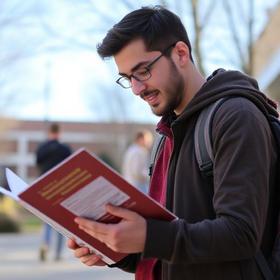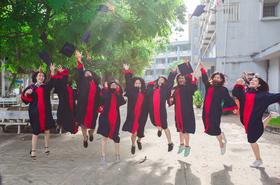- As a growing two-year college, OTC provides excellent and affordable programs to suit every interest and need. Our curriculum includes career training, continuing education, transfer options, and custom-designed training for business and industry.
School Highlights
Arkansas State University Three Rivers serves 2,323 students (23% of students are full-time).
The college's student-teacher ratio of 17:1 is higher than the state community college average of 13:1.
Minority enrollment is 32% of the student body (majority Black), which is less than the state average of 39%.
Quick Facts (2025-26)
- Enrollment: 2,323 students
- In-state tuition: $3,310
- Out-state tuition: $5,950
- Student-teacher ratio: 17:1
- Minority enrollment: 32%
- Source: Integrated Postsecondary Education Data System (IPEDS)
School Overview
The teacher population of 136 teachers has stayed relatively flat over five years.
Arkansas State University Three Rivers
(AR) Community College Avg.
Carnegie Classification
Associate's Colleges: High Career & Technical-High Nontraditional
Associate's Colleges: High Transfer-Mixed Traditional/Nontraditional
Institution Level
At least 2 but less than 4 years
At least 2 but less than 4 years
Institution Control
Public
Public
Total Faculty
136 staff
165 staff
School Calendar
Student Body
The student population of Arkansas State University Three Rivers has grown by 101% over five years.
The student-teacher ratio of 17:1 has increased from 9:1 over five years.
The Arkansas State University Three Rivers diversity score of 0.50 is less than the state average of 0.58. The school's diversity has grown by 10% over five years.
Total Enrollment
2,323 students
1,653 students
Student-Teacher Ratio
17:1
13:1
# Full-Time Students
529 students
595 students
# Part-Time Students
1,794 students
1,058 students
# Enrollment Undergraduate
232 students
194 students
# Full-Time Undergraduate Students
529 students
595 students
# Full-Time Graduate Students
n/a
15 students
# Part-Time Undergraduate Students
1,794 students
1,055 students
# Part-Time Graduate Students
n/a
38 students
Total Dormitory Capacity
n/a
160 students
% American Indian/Alaskan
2%
1%
% Asian
2%
2%
% Hispanic
8%
11%
% Black
16%
18%
% White
68%
61%
% Hawaiian
n/a
1%
% Two or more races
1%
4%
% Non Resident races
n/a
1%
% Unknown races
3%
1%
Diversity Score
0.50
0.58
College Completion Rate (Students who graduate in less than 4 years)
36%
36%
College Completion Rate (Students who graduate in 4 years or more than 4 years)
n/a
31%
Average Graduate Earnings (10 Years)
$28,100
$28,600
Tuition and Acceptance Rate
The public in-state tuition of $3,310 is more than the state average of $2,994. The in-state tuition has stayed relatively flat over four years.
The public out-state tuition of $5,950 is more than the state average of $4,750. The out-state tuition has stayed relatively flat over four years.
In-State Tuition Fees
$3,310
$2,994
Out-State Tuition Fees
$5,950
$4,750
Tuition Notes
$114.00 Per Semester Credit Hour (Arkansas Residents)
% Students Receiving Some Financial Aid
85%
94%
Median Debt for Graduates
$11,085
$9,596
Median Debt for Dropouts
$5,300
$5,300
Acceptance Rate
n/a
100%
SAT Reading
n/a
540
SAT Math
n/a
520
SAT Writing
n/a
515
ACT Composite
n/a
22
ACT English
n/a
22
ACT Math
n/a
21
Source: 2024 (or latest year available) Integrated Postsecondary Education Data System (IPEDS) , School Administrators
School Notes
- OTC's hassle-free registration, computer and learning labs, "hands-on" learning, caring faculty, and staff; career, academic, personal counseling; basic skills instruction, and free tutoring, are offered to help you succeed. Whether you want to prepare for a new career with a degree or certificate, to get the basics to transfer to a university, to upgrade your skills, to complete your GED, to get customized training for your employees, or to just learn to send e-mail to family and friends, OTC has a credit and/or non-credit course or program for you. Ouachita Technical College is accredited by The Higher Learning Commission of the North Central Association of Colleges and Schools.
Frequently Asked Questions
How much does Arkansas State University Three Rivers cost?
Arkansas State University Three Rivers's tuition is approximately $3,310 for In-State students and $5,950 for Out-State students.
Recent Articles

How to Transfer from Community College to a Four-Year University in 2025
A step-by-step guide for community college students transferring to a four-year university in 2025 — updated strategies, data and expert insights.

Scholarships for Community College Students 2025
Explore updated scholarship programs, tuition data, and expert strategies for community college students in 2025.

The Rise of Technical and Vocational Training in 2025
Explore the 2025 surge in technical and vocational training—enrollment, policy, costs, and why this path is gaining ground for students and parents.









